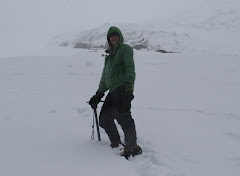
Both Beijing and Mumbai have about 15-20 million people residing in their city, but the contrasts between the two is best illustrated by simply taking a taxi to/from the airport
Leaving Mumbai, Kate and I catch a cab outside the Taj. The cab is from the late 1950s. The meter is on the outside of the car on the passenger side, which means that everytime you hire a taxi the driver has to slide over, stick his arm out the window, and push the button down on what ammounts to an external odometer. The taxi doesn't have A/C and Mumbai is a ridicuously humid place. There are, of course, no seatbelts and no radios. Drivers compensate for this by singing and driving recklessly. Everytime there is a traffic jam, which is often, the drivers turn off the engine. The road that we drive on does have lanes, but it also has cows, autorickshaws, cyclerickshaws, wheelbarrows, fruit carts, precessions celebrating Ganesh, and people bedding down for the night. No joke! The freeway overpasses have people sleeping on them, not under them, ON THEM! The backseat is relatively comfortable, but that is because it doubles as a bedroom for the cabbie. This makes the backseat have a certain odor called "cab driver feet." The ride to the airport takes 1.5 hours and the driver keeps yelling at us in Hindi despite the fact that we obviously don't understand a word of what he is saying, except "traffic." The honking is incessant. All the cars (plus others) are jockying for postions. Road rules are not followed. If there are 3 lanes, traffic is 5 abreast. Its like NASCAR at very slow speeds. Child beggars bang on the windows. The ride terminates and the cab drivers always try and tell you that the ride costs more money than it does. Since the meters are as old as the cars, every cab driver is required to carry a chart that converts what the meter says into what the cost is in rupees. When you ask the driver "how much?" he always says a number higher than the actual, which then requires you to demand to see the conversion table. The driver then "searches" for the chart. He doesn't produce the chart until you lean back in the seat making it obvious that you are not paying until you see the chart. He then "finds" the chart. You look at the chart and inform the driver of the real price. He smiles and without looking at the chart himself says, "okay."

In Beijing, I exit the airport and join the orderly que for taxis. I enter a taxi from the 21st century. The man flips the meter (which is inside the car) and a computerized voice welcomes me to the taxi. The taxi is clean, it has A/C, power windows, airbags, a radio, and seatbelts. I don't wear mine out of principle. The cab driver doesn't speak much English, but he doesn't expect that I speak Mandarin which leads to a fabulous, quiet ride, in airt conditioned comfort. He drives on a freeway that contains only cars. We get to go fast and by "fast" I mean normal speeds. The lanes are marked and the cars stay within the lanes. No one use4s their horn the entire 45 minute drive. The driver is even wearing white gloves. We arrive at the hotel and I pay the farevisible on the meter and then it prints me a reciept.
I will reserve final judgement on this debate until I take a taxi in Shanghai. After all, maybe Beijing has cleaned up its act for the olympics.


1 comment:
Hmmm, democracy vs communism? Socialism vs capitalism? Care factor vs ... non-care factor?
I loved HK for it's orderliness, except for the few cabbies that thought the best driving practice was to continually pulse the accelerator giving any passenger whiplash on a five minute ride. Shanghai should be awesome. Isn't that the place from the pirate movies?
Post a Comment